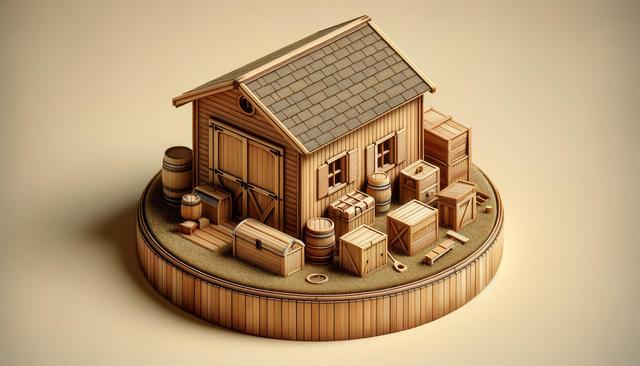The Practical Benefits of Storage Sheds
Storage sheds are an excellent way to enhance the functionality of your outdoor space. Whether used for tools, gardening supplies, seasonal items, or recreational gear, they help keep clutter out of your home and garage. By providing a dedicated area for storage, they help maintain order and improve the overall appearance of your property. Many homeowners find that a well-organized shed allows for quicker access to frequently used items and promotes more efficient use of time on outdoor projects.
In addition to organization, storage sheds offer protection from the elements. Items stored inside are shielded from rain, snow, and sun exposure, which can extend the life of tools and equipment. This is particularly useful for metal tools and machinery that may rust or degrade if left outside. Moreover, by locking your shed, you can secure valuable items and reduce the risk of theft.
Choosing the Right Size and Design
When selecting a storage shed, size and design are key considerations. The right shed depends on your available outdoor space and what you plan to store inside. A compact shed may be sufficient for basic gardening tools, while a larger structure might be necessary for lawnmowers, bicycles, or even a workbench.
Design also plays a role in the shed’s integration with your property. Sheds come in various styles, including gable, barn, and lean-to designs. Choose a design that complements your home’s architecture and landscaping. A well-designed shed can even enhance the visual appeal of your yard.
Before purchasing or building a shed, consider the following:
- Measure your available space carefully.
- Check local building codes or regulations.
- Think about future storage needs for scalability.
- Evaluate the placement for accessibility and sunlight.
Materials and Durability
Storage sheds are available in several materials, each with its own advantages. The most common options include wood, metal, and resin (plastic) sheds. Wood sheds offer a classic, natural look and are easy to customize with paint or additional features. However, they may require regular maintenance to prevent rot or termite damage.
Metal sheds are known for their strength and resistance to fire and pests, but they may be prone to rust if not properly treated. Resin sheds, made from high-density plastic, are lightweight and resistant to rot, rust, and insects. They require minimal maintenance and are often easier to assemble.
Durability also depends on the quality of construction and the shed’s foundation. A solid base, such as concrete or a wooden platform, helps keep moisture out and provides stability. Investing in quality materials and a good foundation can significantly extend the life of your shed.
Customization and Use Cases
One of the major advantages of having a storage shed is its versatility. Sheds can be customized to suit various needs beyond simple storage. For example, many homeowners convert their sheds into:
- Workshops for DIY projects
- Potting sheds for gardening tasks
- Outdoor offices or creative studios
- Playhouses for children
Customization options include adding shelves, hooks, and cabinets for better organization. You can also install lighting and power outlets to make the space more functional. Windows and vents can improve airflow and natural lighting, especially if you’re spending extended periods inside.
Whether you need a quiet retreat or a practical space for hobbies, a storage shed can be adapted to meet those needs. This flexibility adds long-term value and usability to your property.
Maintenance and Long-Term Care
To ensure your storage shed remains in good condition over the years, regular maintenance is essential. For wooden sheds, this includes periodic painting or staining to protect the wood from weather damage. Inspect the structure for signs of wear, such as rot, loose shingles, or pest activity.
Metal sheds should be checked for rust and repainted or treated as needed. Keep the roof clear of debris and ensure the gutters (if present) are functioning properly to prevent water buildup. For resin sheds, cleaning with mild soap and water is usually sufficient to maintain appearance and durability.
Additional care tips include:
- Keep the interior organized to avoid overcrowding.
- Label storage bins and use clear containers for visibility.
- Install moisture absorbers in humid areas to prevent mold.
- Secure the shed with locks to protect stored items.
With proper care, your shed can serve as a reliable utility space for many years, reducing the need for frequent replacements or repairs.
Conclusion: Making the Most of Your Outdoor Storage
Storage sheds offer a practical way to manage outdoor belongings while enhancing the overall utility of your yard. From basic storage to specialized uses, their adaptability makes them a worthwhile investment for homeowners. By choosing the right size, material, and design—and committing to regular maintenance—you can enjoy a well-organized, functional space that meets your needs year-round.




Leave a Reply